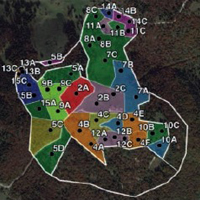Pasture botanical composition and forage quality at farm scale: A case study

Accepted: 20 August 2019
HTML: 257
All claims expressed in this article are solely those of the authors and do not necessarily represent those of their affiliated organizations, or those of the publisher, the editors and the reviewers. Any product that may be evaluated in this article or claim that may be made by its manufacturer is not guaranteed or endorsed by the publisher.
The importance of maintaining mountain pastures in preserving environmental services is widely known. However, in mountainous regions, environmental and vegetation heterogeneity at the farm scale affect farm management. This study was conducted at the summer pasture of Malga Serona (northeastern Italy) to introduce a discussion of appropriate management at the farm scale. Forty botanical surveys were performed, where an herbage sample from a 100×100 cm surface was collected in each survey. The number of species, the average Landolt index, and the pastoral value (PV) were calculated for each survey. For each herbage sample, nutrient content was measured. We observed differences in botanical composition and in forage quality within the study area. We found that the PV varied from 35.6 to 52.2, NDF from 41.0 to 52.0% and crude proteine from 12.3 to 15.8%. Areas with lower PV and lower forage quality were marginal and were found in surveys with high abundance of Sesleria varia (Jacq.) Wettst., or with species usually present in under-grazed pastures. It is necessary to study botanical composition and forage quality of pastures at the farm level, and to utilize the whole grazing surface in order to maintain and restore high-quality forage.
How to Cite
PAGEPress has chosen to apply the Creative Commons Attribution NonCommercial 4.0 International License (CC BY-NC 4.0) to all manuscripts to be published.

 https://doi.org/10.4081/ija.2019.1480
https://doi.org/10.4081/ija.2019.1480







